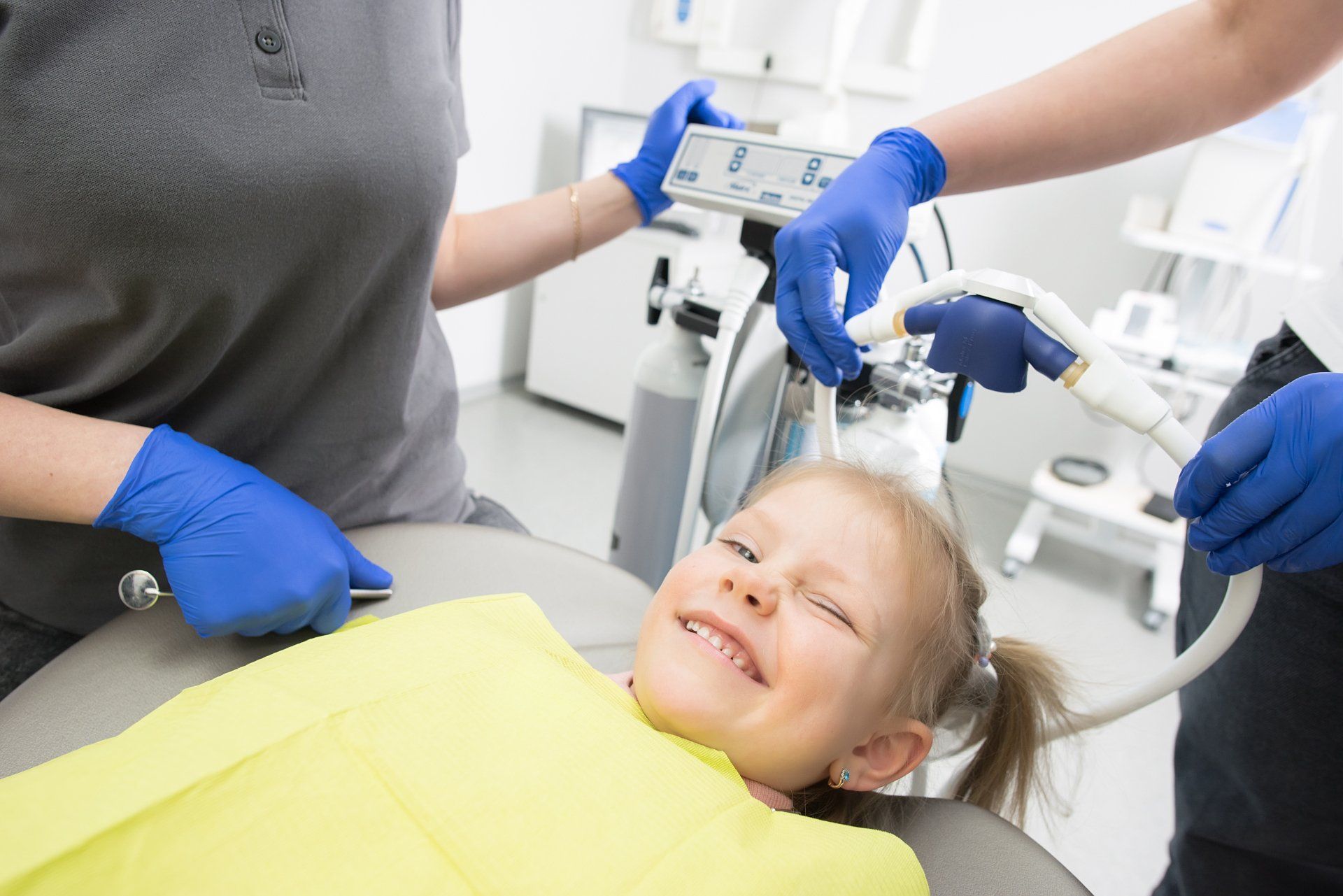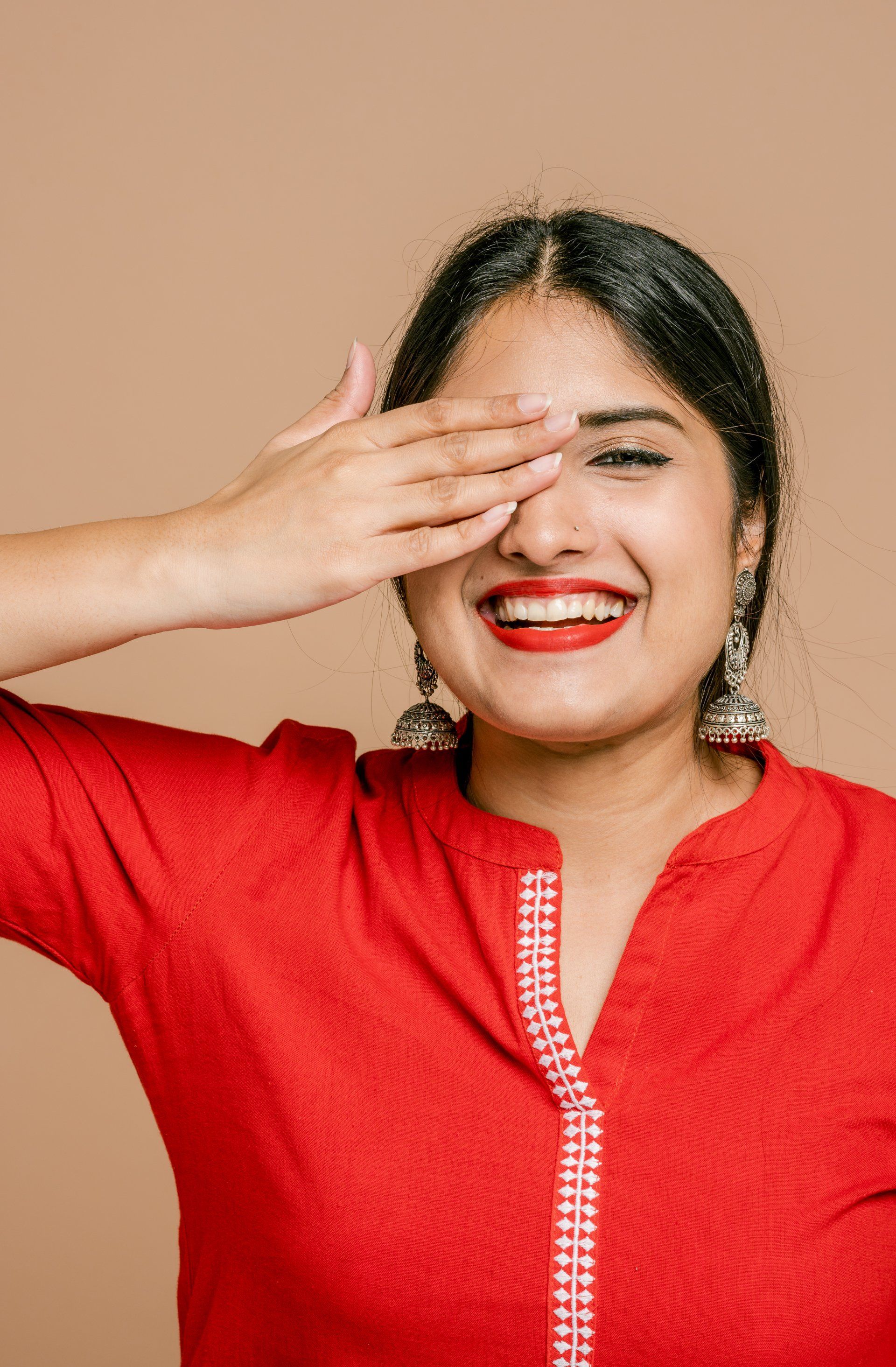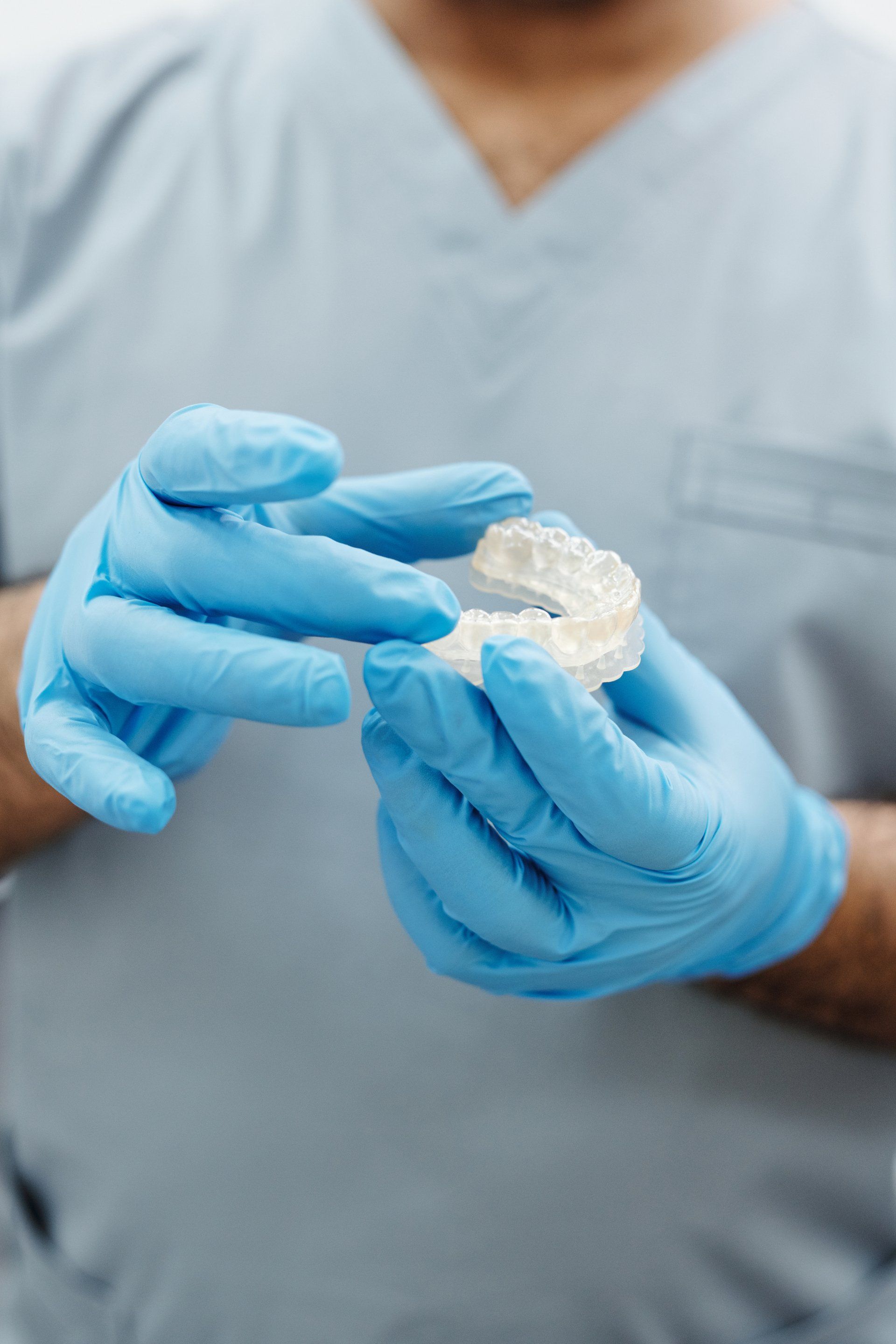About Orthodontics

We are often asked why you should bring your child to the orthodontist between the ages of 7 and 8, as the American Association of Orthodontics recommends. Not every child will need to be treated at this age, however it is important to ensure that we are not missing major problems. Early treatment can begin around age 8 or 9 with the goal of correcting certain jaw and bite problems. These include things such as severe crowding which can prevent adult teeth from coming in, crossbites which can impact the way their jaws are growing, underbites, and also bad habits. We will never recommend treatment for a child who does not need early treatment.
What causes childhood orthodontic problems? How will early orthodontic treatment benefit my child?
Orthodontic problems can be inherited or caused by things such as injury to the mouth, early or late loss of baby teeth, or thumb-sucking habits. These can lead to severe crowding, spacing problems, jaw growth problems, protruding teeth, and misaligned bites (overbite, underbite, or crossbite). Receiving early orthodontic treatment can help prevent the need for orthodontics in the future and prevent difficult procedures such as extraction or oral surgery as an adult.
If you think your child shows signs of needing orthodontic care or if you have been directed by your dentist to seek orthodontic care, please do not hesitate to give us a call and schedule a consultation. Our team will be happy to assist so that you can take the best steps towards caring for your child’s smile.
Some signs your child may need early orthodontic treatment…
- Early or late loss of baby teeth (most children begin losing teeth around age 5 and have all permanent teeth around age 13)
- Difficulty chewing and/or biting
- Mouth breathing
- Thumb sucking after age 5
- Speech impediments
- Protruding teeth
- Teeth that don’t come together in a normal manner or at all
- Jaw shifting when your child opens or closes his/her mouth (crossbite)
- Crowded front teeth around age 7 or 8

Have you been thinking about adult orthodontics? You’re not alone! About one in four patients in orthodontic treatment is over the age of 18 with the number of adults seeing an orthodontist at an all-time high in recent years. Your smile will naturally shift as you age. Even if you had orthodontic treatment as a teen, you may notice your smile shifting as you get older. This is a natural part of the aging process.
Some common reasons why adults consider orthodontic treatment include a bad bite, overcrowded teeth, abnormal jaw pain caused by crooked teeth, and a desire for a healthier mouth and more confident smile. There are many treatment options for adults that are comfortable, low-profile, and customized to your unique needs and lifestyle. Dr. Varone and our team will work with you to ensure that your needs are met with understanding and respect and that you receive the very best treatment to help you achieve your perfect smile.
It is important to consider some of the key differences between treating adults and children or teens. Whereas the jawbones of younger patients are still developing, for adults these bones have stopped growing, which may make orthognathic surgery a best option to align the jawbones. Further, adults are more likely than children to have gum recession or even bone loss due to gingivitis or periodontal disease; worn or missing teeth; or to have had incomplete orthodontic treatment as a child or teen.
Reasons to Consider Orthodontic Treatment as an Adult…
- Healthier teeth and gums. Better access to well-aligned teeth makes brushing and flossing both easier and more effective. This can decrease your chances of tooth decay and other health problems linked to periodontal disease such as heart disease, diabetes, and rheumatoid arthritis.
- Self-confidence. Having a straight, beautiful smile is undoubtedly a confidence booster, giving you a better quality of life and the courage to smile happily without holding back!
- Less chance of trauma or wear and tear. Teeth that are not well-positioned and protrude at odd angles can lead to chipping, fractures, and other avoidable trauma.
To learn more about the immense benefits of adult orthodontics and find out what treatment is right for you, give us a call today!

You have worked hard to achieve your perfect smile, now let’s keep it that way!
You’ve finally finished your orthodontic treatment, your braces or aligners have been removed, and your smile is beautiful, straight, and healthy! But your orthodontic journey doesn’t quite end there. It’s important that you wear a retainer to preserve and stabilize your teeth, limiting the potential for shifts in your tooth position. Retainers are a critical part of the orthodontic process after the completion of your treatment.
There are different types of retainers–removable or fixed–which Dr. Varone will recommend on a case by case basis. Removable retainers can be taken out for eating and hygiene routines, however can also get lost easily and are easy to forget to wear. On the other hand, fixed retainers are great if you don’t want to keep track of it, but they do require more attention to remove tartar while flossing.
Traditional removable retainers include a metal wire which surrounds the front teeth attached to an acrylic arch that sits in the roof of the mouth. Aligner-style removable retainers look similar to clear aligners and offer a more comfortable and aesthetic alternative to wire retainers. Finally, fixed retainers consist of wires bonded behind the bottom and/or top teeth and typically remain in place for life.

Elastics (Rubber Bands)
Elastics improve the force applied to certain areas of your mouth. This better aligns your bite and can help with different types of jaw misalignment.
Forsus
The Forsus Fatigue Resistant Device offers an alternative to cumbersome headgear that is easier and more reliable in treating excessive overbites, improving the fit of teeth, and can prevent the need for jaw surgery.
Headgear
Headgear is used to treat excessive bite problems and to support the proper alignment and growth of the jaw bone. By gently “pulling” on your teeth, headgear prevents further forward growth of the upper teeth and jaw.
Herbst Appliance
A less obtrusive and bulky alternative to headgear, a Herbst appliance is a fixed device that connects the upper and lower jaw to reduce overbite. It is most often used for younger children and worn for about 12-15 months.
Palatal Expander
A palatal expander is a device used to gradually widen (or “expand”) the upper jaw. By putting gentle pressure on your upper molars and the junction of the two palatal bones, the bones move apart and the jaw widens. This expansion can be used to make space for all of your teeth, preventing or fixing overcrowding, or to address a crossbite.
Retainers
A retainer is an appliance used after orthodontic treatment to preserve and stabilize your teeth, limiting the potential for shifts in your tooth position. Wearing your retainer as directed is crucial to prevent regression after your treatment.
Separators or Spacers
Spacers are small elastic devices placed in between teeth in order to make room for orthodontic bands. Spacers are often used to prepare your teeth for upcoming treatment.
TADs
Temporary Anchorage Devices, or TADs, are small screw-like dental implants made of titanium alloy. They provide a temporary stable anchorage to help achieve quicker tooth movement. TADs are used in addition to braces for more efficiency and comfort, often as an alternative to permanent dental implants or headgear.
Space Maintainers
A space maintainer is a device used to leave sufficient space open for permanent teeth to grow in after baby teeth are lost. Their main function is to prevent surrounding teeth from shifting into the space left by a baby tooth that was lost too soon.
